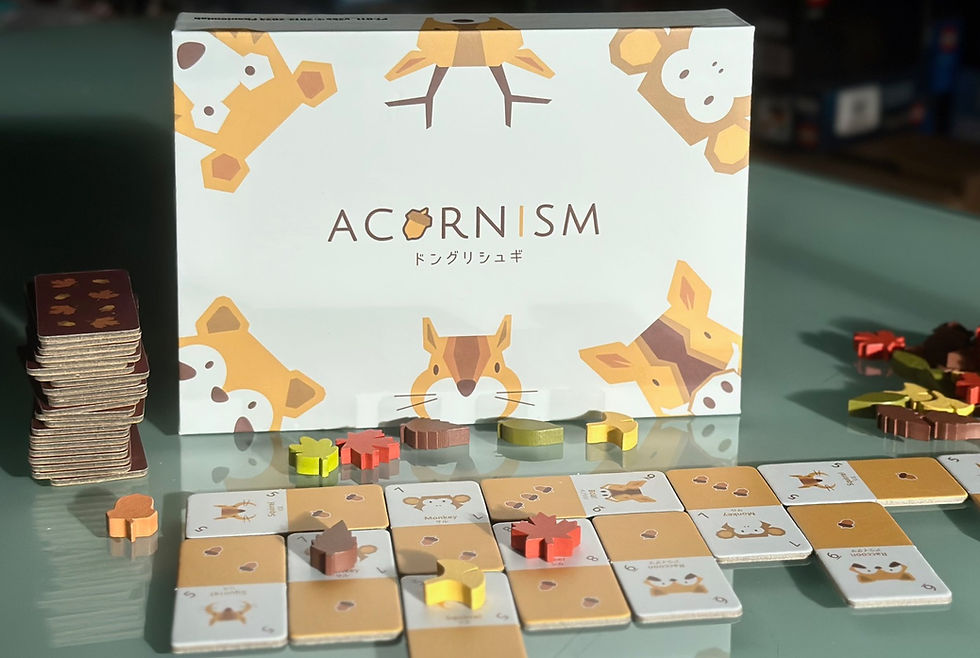Annapurna
- Board's Eye View

- Jun 22, 2020
- 2 min read
Updated: Oct 24, 2020
No, Annapurna is not the name of the game designer (that's Rebecca Horovitz). It's the name of what is described as 'the most dangerous mountain in the world': a mountain in Nepal. Tho' the game is loosely themed around mountaineering, its focus is more on the game's sub-title 'Leave No Trace Behind' as the 2-4 players strive to achieve a balance between the Yin and Yang on their card mountain.

The game comes with rules for both co-operative and competitive play. This is a welcome touch, tho' you'll probably find you're mainly using the co-op rules to teach Annapurna before moving on to the competitive version of the game. In competitive mode, you'll be trying to upset other players' Yin/Yang balance while preserving your own, but even with this 'take that' element, Annapurna remains a relatively relaxed, one might even say serene, game, although it is a game where the tension can mount... Hardened gamers may initially dismiss Annapurna as too light but you'll find it deserves a place as a good change-of-pace filler-length game. At the same time, Annapurna is certainly very playable as a family game, and for a wider age range than the 13+ indicated in the rules.
Players each start off with identical decks of 15 square cards. These are each laid out in a grid of 5. 4, 3, 2, 1 face down cards, with three left over to form your backpack. The grid represents the mountain, so you start off on the 5-card base and ascend by moving up towards the single-card peak. On your turn, you explore by moving your chunky wooden meeple to an adjacent card (above or in the same row) and flipping the card to reveal and act on its text and effect. When you've finished your 'explore' or other action, you 'sweep' the mountainside moving to your cache face-up cards where the Yin and Yang symbols balance. Tho' there is advantage in scaling the mountain to the peak - especially in a competitive game - this game isn't about racing to the summit: the important thing is to get cards into your cache by achieving that Yin/Yang balance. It's that that will determine the winner.
At the start of the game, you may find that you are often simply following the instructions on the cards, so the trick is to use your backpack (switching cards, including with those of other climbers) to get more agency over your actions... When actions position cards on a mountainside, they are placed face down, so Annapurna is also to an extent a memory game...
Shown here on Board's Eye View is a preview copy of Annapurna. The game is currently live on Kickstarter, where the publisher, Fiat Lucre are offering the option of a zip bag carry pouch. The bag lets you ditch the box to make the game more easily portable: by no means essential, but a nice touch. It's a game you can pack to take away with you on holiday; just be warned, the mountain grid card layout takes up a fair amount of space so don't expect to be able to set this game up on your airline seat tray :-)
Click here to check out the KS campaign.




